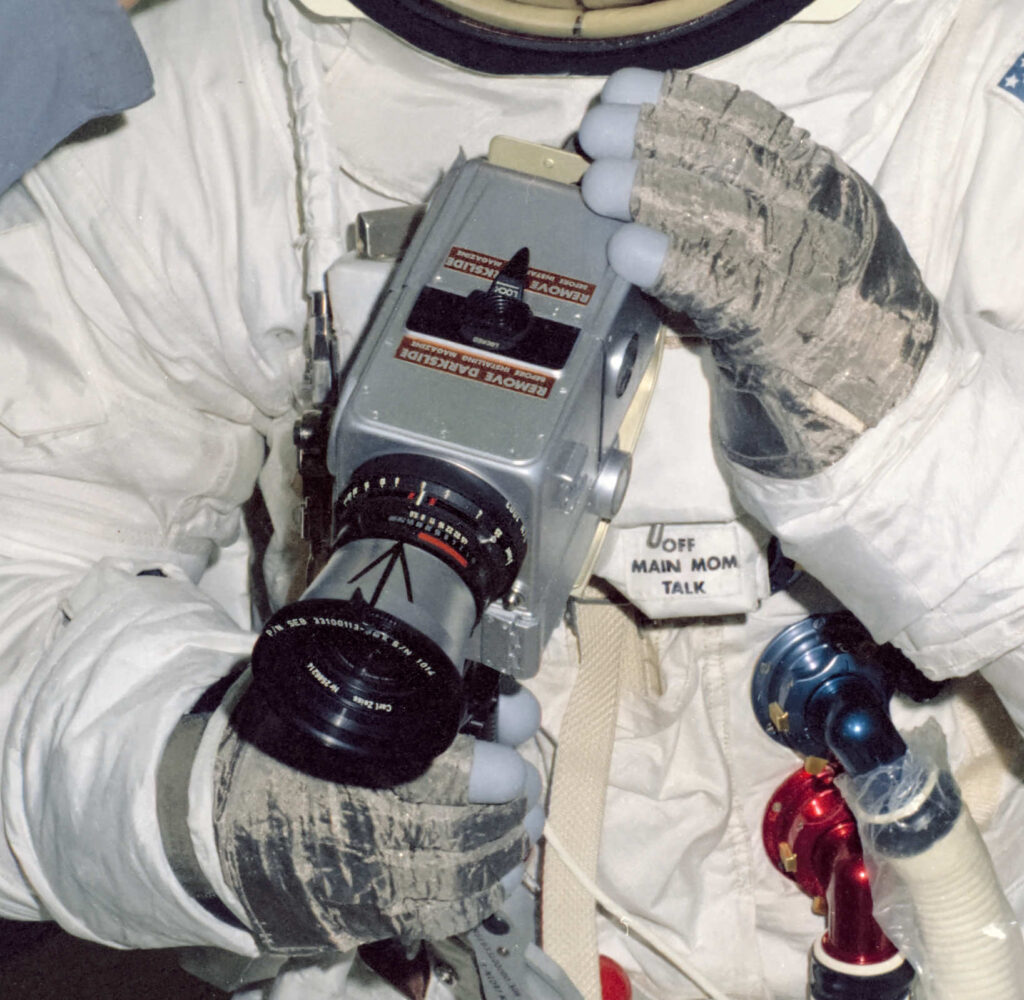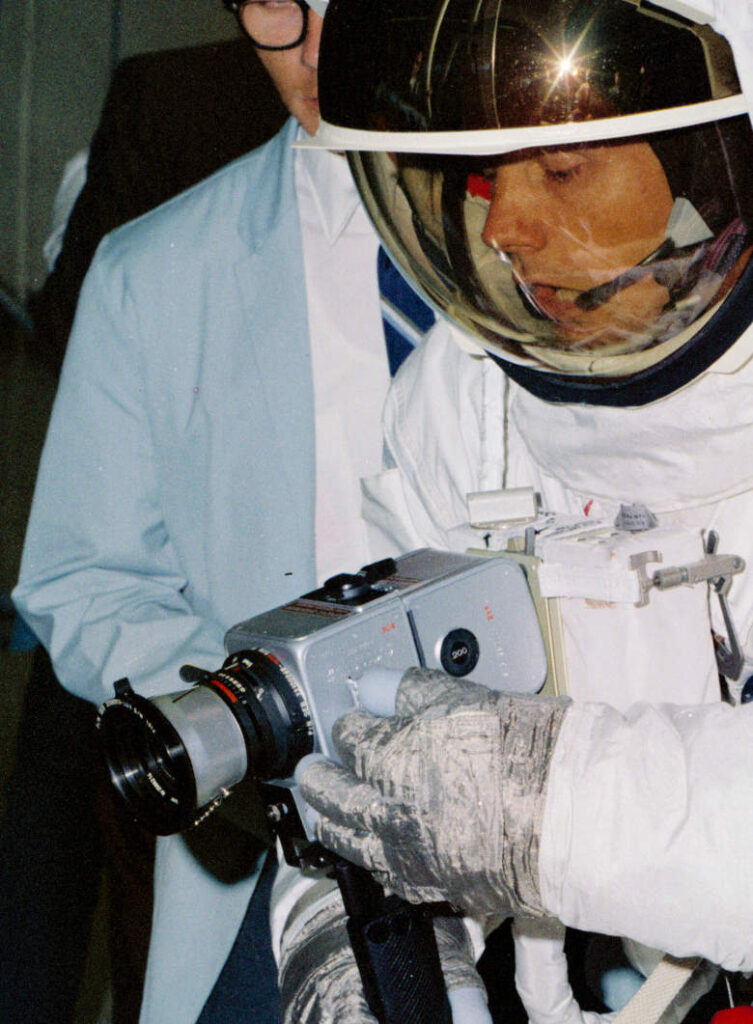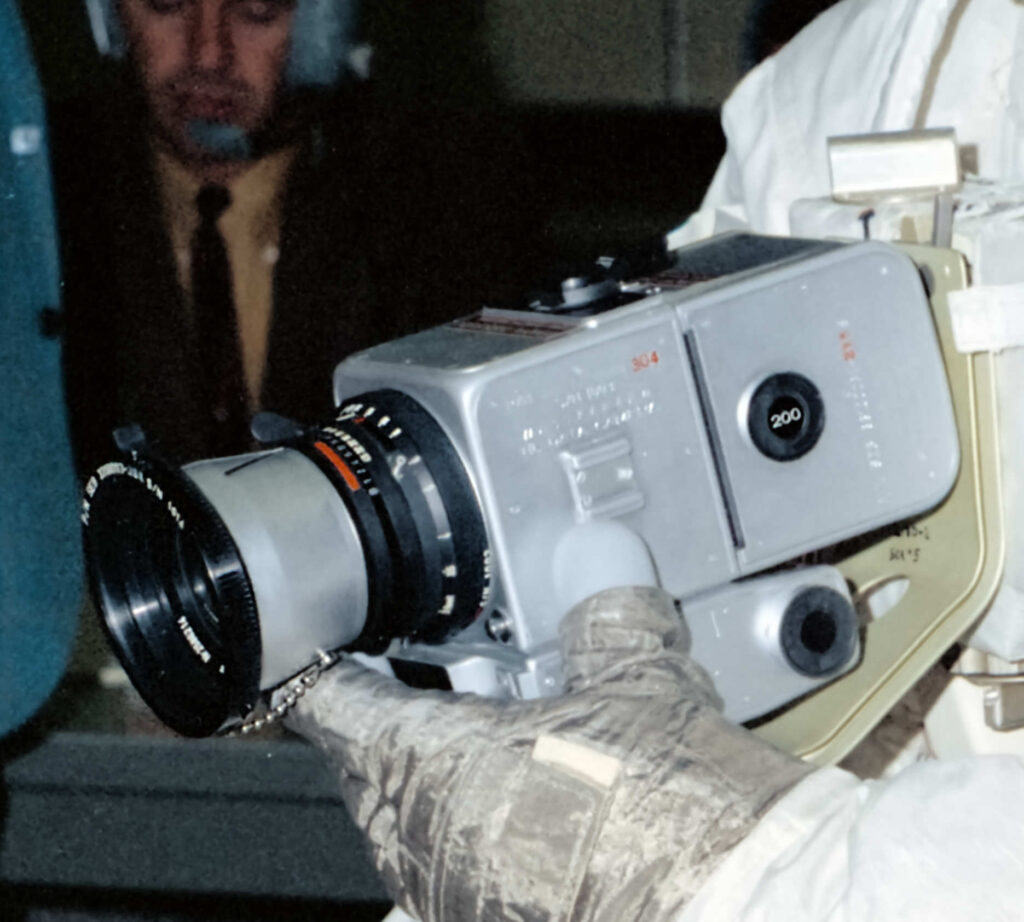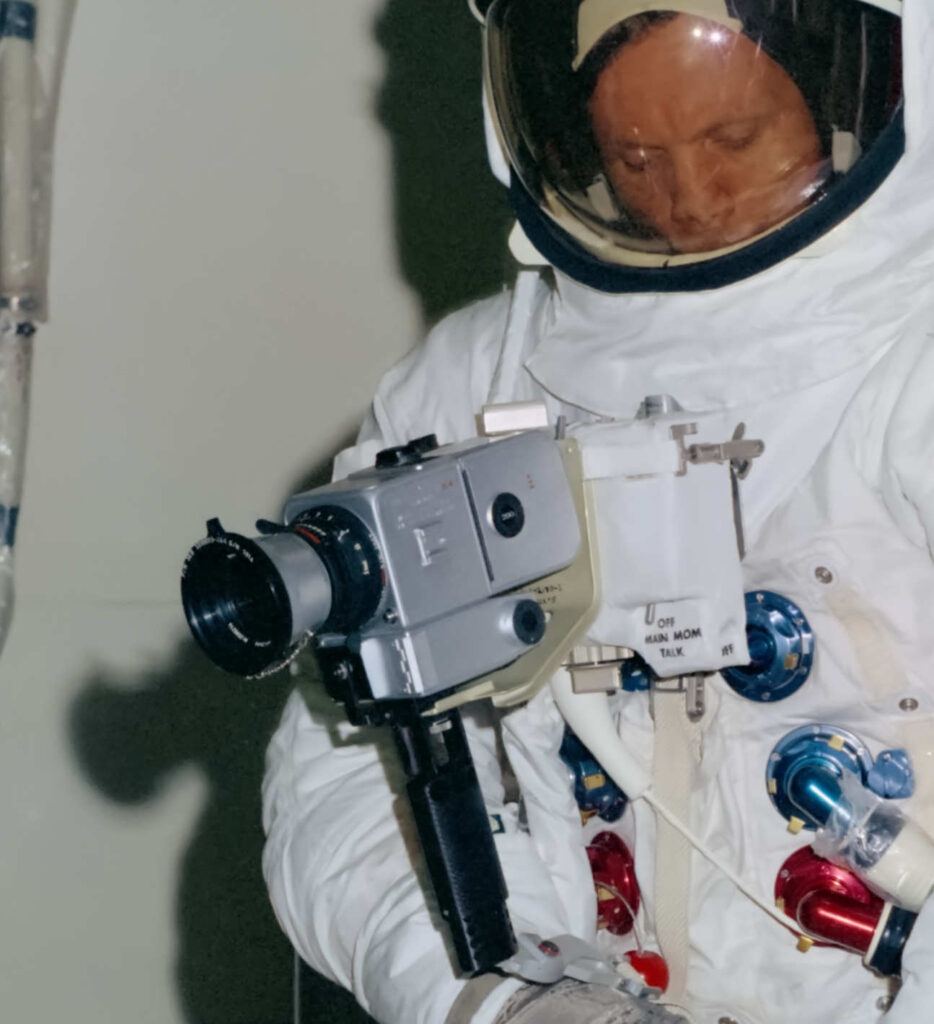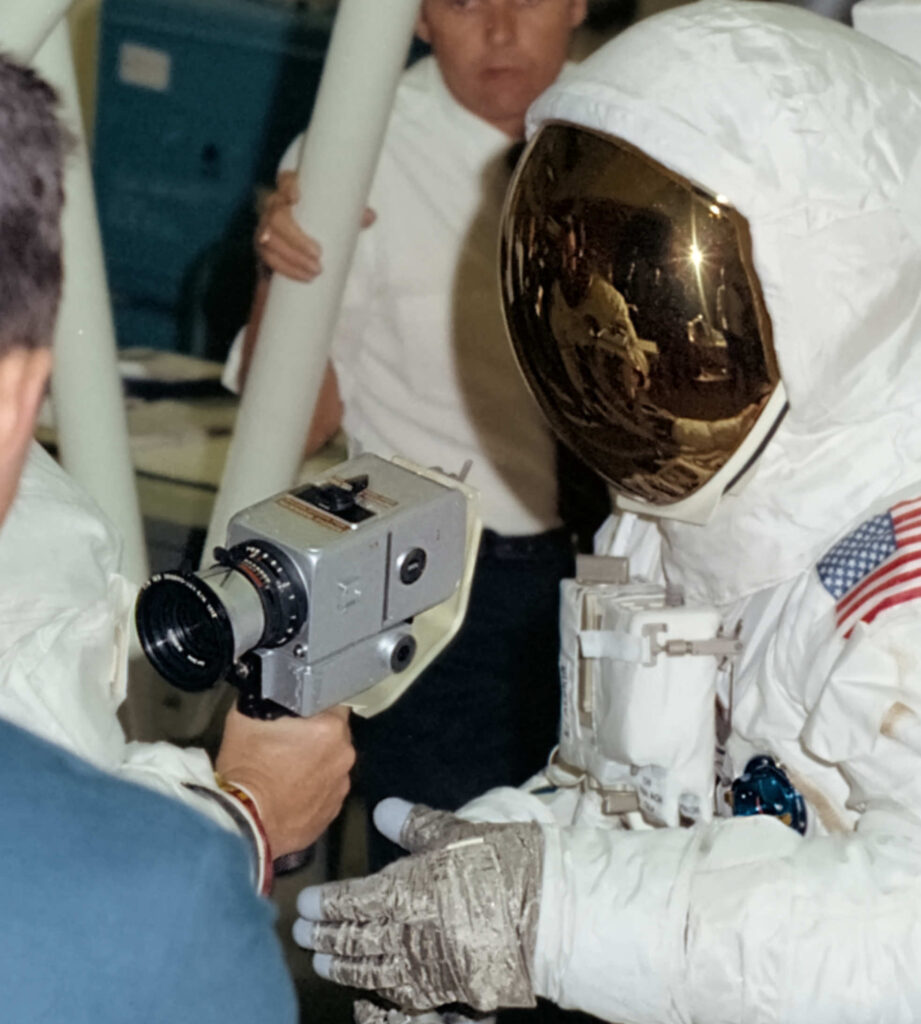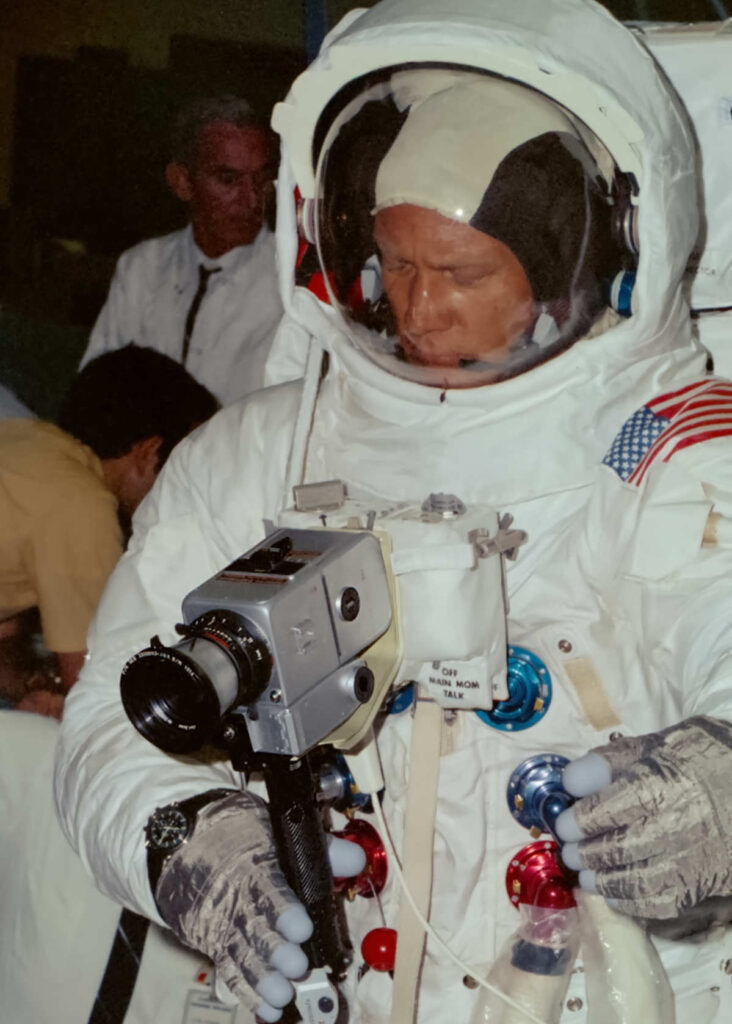25 June 1969. Fit and Function testing KSC.
These are the only photos of the Apollo 11 flight Hassleblad that I know of, the actual camera used on the moon. On some of these shots, we can see the serial numbers printed on the camera and film magazine. Checking these numbers against the LM stowage list confirms that these are indeed the flight units. As we know, the magazine now resides at the Smithsonian in Washington DC but the camera body, the PLSS bracket and the lens are still on the moon where Neil left them.
At the end of the EVA, Neil stood by the MESA and pressed the camera trigger seven times to advance the film, ensuring that the precious EVA shots were well-hidden inside the magazine. (At the start of the EVA, Buzz lowered the camera to Neil with the magazine and camera bracket attached. Since it was impossible to insert the dark slide into the camera body with the magazine attached, because of the reseau plate, the dark slide must therefore have been left inside the LM. It was vital to advance the film to protect it from the sunlight, we can see that the very last frame is indeed sun-flashed. Back inside the LM, Buzz would have inserted the dark side as he received the magazine from Neil on the surface.)
I can’t believe that Neil Armstrong, a man passionate about engineering, would have just dropped a beautiful Hasselblad into the lunar soil. I’m certain that he gently put it down on the MESA table, where it sits to this very day. Could the blast from the ascent stage liftoff have blown it away? I would like to think that it is still where Neil left it, toughing-out the extreme heat and freezing cold. One day, someone will pop in a new battery and clip on a magazine and be ready to go.
They had two Hasselblads in the LM. The second was ignominiously jettisoned before liftoff along with the PLSS’s, boots etc.
There is a lot to see in these photos; the polarising filter is attached the the lens, with a safety chain fitted. The field-of-view sight lines marked on the lens barrel. The ‘REMOVE DARKSLIDE’ decal is there but the decal with the exposure settings is absent. We see the tether which is attached to the camera handle/trigger mechanism. We can also see that the lens has the full range of f-stops, f/5.6 to f/45 whereas the later cameras, Apollo 15 onwards had a more limited range f/5.6 to f/16.
